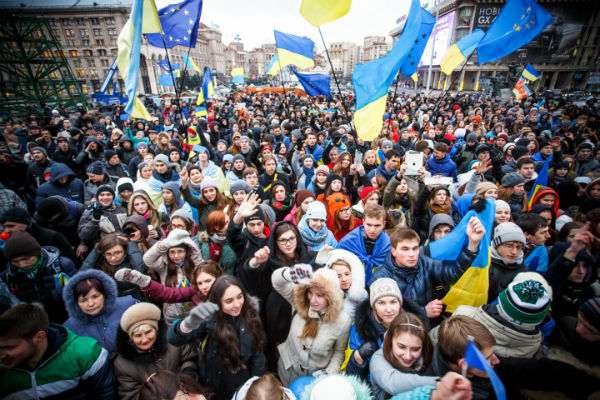Ukraine does not have the time for modernization of the kind Western societies went through or the kind of strong state that modernized some Eastern ones, Valery Pekar says. Instead, it has had to rely on its dynamic civil society, which with its “do it yourself” attitude has brought Ukraine back from the brink of being a failed state.
In the article called "A 'Do-It-Yourself' Country" in Novoye Vremya, an instructor at Kyiv
Mohyla Business School observes that not long ago “Ukraine looked like a typical failed state: its government machine was in ruins, there was no army, no judicial system, no national idea, nor any national project. Such countries typically don’t stand up to a military attack and fall into pieces.”
That is what Ukraine’s enemies counted on. But it didn’t happen. Why not? “Why is our strength today greater than it was a year ago?” According to Pekar, there is an obvious answer: “thanks to volunteers and thanks to a strong civil society,” which made up for the shortcomings of the state at a time when rapid change was needed.
“Located on the edge of a continent between the two gigantic geopolitical plates of Europe and Asia, divided over the course of centuries between empires and having weak national elites and long breaks in its own statehood,” he writes, “Ukraine was in the club of late modernizers.” And it had to figure out how to escape.
Neither of the usual recipes was available, Pekar says.
The European path, based on the gradual appearance of new values and social practices, was impossible because Ukraine simply has not had the time to wait for these things to happen, Pekar says. And the Asian path, based on the imposition of these values by a strong state, was precluded because Ukraine lacks that kind of state mechanism.
The country “which is arising as a result,” he says, can be justifiably called “a Do-It-Yourself Country.” That is “a completely new model one that does not correspondent to either the traditions of slow European growth from below not with the practice of rapid Asiatic imposition from above.
Importantly, Pekar says, this “third path” was not so much chosen as the result of something spontaneous “when a critical mass of people with new values had already taken shape.” That makes Ukraine particularly interesting among the inevitably interesting category of “late modernizers.”
According to the Kyiv professor and entrepreneur, the success of Ukraine’s modernization depends on advances across “a broad front,” including economic modernization and the appearance of a middle class, spiritual modernization with dialogue among religious confessions, cultural modernization with the appearance of new heroes, identity modernization with the creation of a political nation, and intellectual modernization with the increase in the status of higher education.
Obviously, he acknowledges, a great deal of work still needs to be done in each of these areas, but there is already enough progress to declare that Ukraine’s achievement over the last year has had less to do with either bottom-up or top-down modernization than with the emergence of Ukrainians prepared to “do it themselves.”

